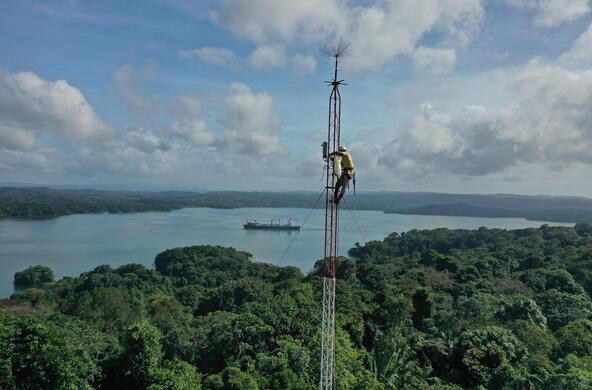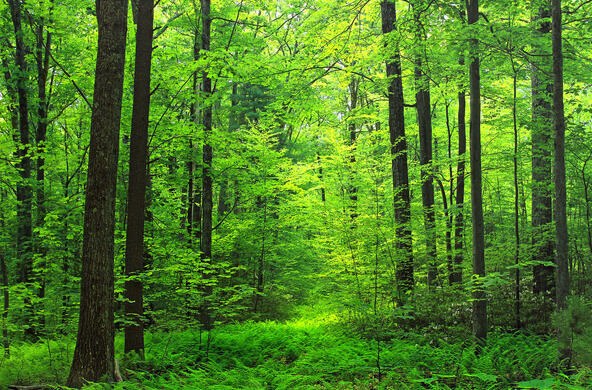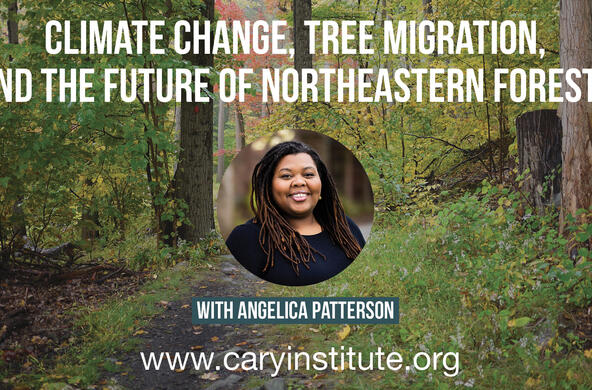Throughout much of the northeastern US, snow doesn’t accumulate the way it used to. It doesn’t get as deep and it disappears earlier in the spring. These changes matter for towns whose economies depend on winter sports. Shrinking snowpack also raises concerns about groundwater supplies, wildlife and ecosystem health, and water availability for agriculture.
Cary Institute’s Geoff Wilson, who manages field and laboratory operations at the Hubbard Brook Ecosystem Study in New Hampshire, wanted to find out what might be causing Northeastern snowpacks to shrink.
"Snow is important culturally and economically to my community, and the rich datasets at Hubbard Brook enabled us to get a clearer picture of the ways the snow season is changing as winters get warmer," Wilson said.
Until recently, it has been difficult to sort out whether the reduced snowpack was caused by less snowfall, more melting, or some combination of the two. But with the help of a 56-year data set from the Hubbard Brook Experimental Forest, Wilson and colleagues were able to disentangle these factors and find an answer.
“Way before anyone was thinking about the climate changing, researchers were out there measuring snow weekly — since 1956, in some cases,” said Wilson, lead author on the study. “And because we're at Hubbard Brook, we also have daily precipitation and temperature data. It’s this enormous, rich data set that's decades old.”
The findings, published in PLOS Climate in December, pin the blame on faster melting, rather than lower snowfall. Disconcertingly, they find that warmer winters are causing more melting even in places that aren't rising above freezing more often, supporting the idea that winter ecosystems respond in complex ways to a warming climate.

Unique, decades-old data
The Hubbard Brook Ecosystem Study is a unique public-private partnership involving the USDA Forest Service, Cary Institute of Ecosystem Studies, the Hubbard Brook Research Foundation, and scientists from scores of research institutions throughout the country. For more than five decades, scientists on the project have been studying the relationship between forest cover and water quality and supply. Long-term data from this site have led to countless discoveries, including acid rain, and continue to be useful.
The new paper drew on several of these rich and careful data sets. It used 56 years of snowpack measurements collected by the Forest Service on three Hubbard Brook mountainsides. These data provide a record of when snow began accumulating at each location, when it reached its maximum, and when it disappeared each spring.
Combining the snowpack measurements with daily temperature and precipitation data, the researchers were able to investigate to what degree the region’s changes in snowpack characteristics were due to changes in precipitation versus increases in snowpack melting.
Small temperature changes, big impacts
The data confirmed that the snowpack size is shrinking at Hubbard Brook. At the warmest of the three sites, the maximum snowpack — measured as snow water equivalent, or the amount of water contained in snow — declined by 14.6 centimeters over the 56-year record. At the coldest site, it shrank by 7.8 centimeters. Somewhat surprisingly, the date at which snowpacks are reaching their maximum was not changing.
Snowpack also persists for less time, the researchers found. At the sunnier, south-facing site, snow season starts later and ends earlier, with snowpack duration shortening by about 10 days per decade. At the less sunny, north-facing sites, spring snowmelt is moving earlier by 4 days per decade.

Interestingly, the amount of precipitation that falls as snow did not change over time at the colder locations, even though the maximum snowpack size decreased. It was the weeks with snowpack loss, and the total amount of melting, which increased — even at sites that did not show increases in thawing conditions.
The scientists conclude as air temperatures rise — even before they get warm enough to change snow to rain — snowpacks are absorbing more heat from the air. This additional heat makes the snow more sensitive when thawing conditions do occur.
“If it's, say, 1 degree Celsius below freezing, when it used to be 10 degrees below freezing, there's no thawing, but there's less cooling,” Wilson explained. “So the snowpack is still warmer than it was, even if it's below freezing. Then, when it goes above freezing, it's quicker to melt.”
These conditions will of course be exacerbated as the climate continues to warm.
Wilson’s previous work has shown that snowpacks affect soil processes all year long, and he anticipates that he and fellow scientists at Hubbard Brook will continue looking into how changing snowmelt impacts soil health. Having a blanket of snow on the ground helps to insulate important soil microbes, keeping them at a warmer and more stable temperature than if they were exposed to the air, and can protect tree roots. In addition, the timing and rate of snowmelt have a big impact on soil moisture during the growing season.
“Soil temperature and soil moisture are the two big things that govern all the below-ground processes,’ said Wilson. “They’re both changing, and how that's reflected in the below-ground environment is not fully fleshed out yet.”
Citation
Wilson G, Green M, Campbell J, Contosta A, Lany N, Bailey, A. (2024) Long-term measurements of seasonal snowpacks indicate increases in mid-winter snowmelt and earlier snowpack disappearance in the northeastern U.S.. PLOS Climate 3(12): e0000529.
Funding
This work was supported through the National Science Foundation’s Long-term Ecological Research (LTER) and Ecosystem Studies programs (grants DEB-1637685 and DEB- 2224545 to GW, MG, and AC), a joint-venture agreement between Case Western Reserve University and the Northern Research Station of the USDA Forest Service, and the USDA Forest Service Northern Research Station. The Hubbard Brook Experimental Forest is operated and maintained by the USDA Forest Service, Northern Research Station, Madison, WI.






